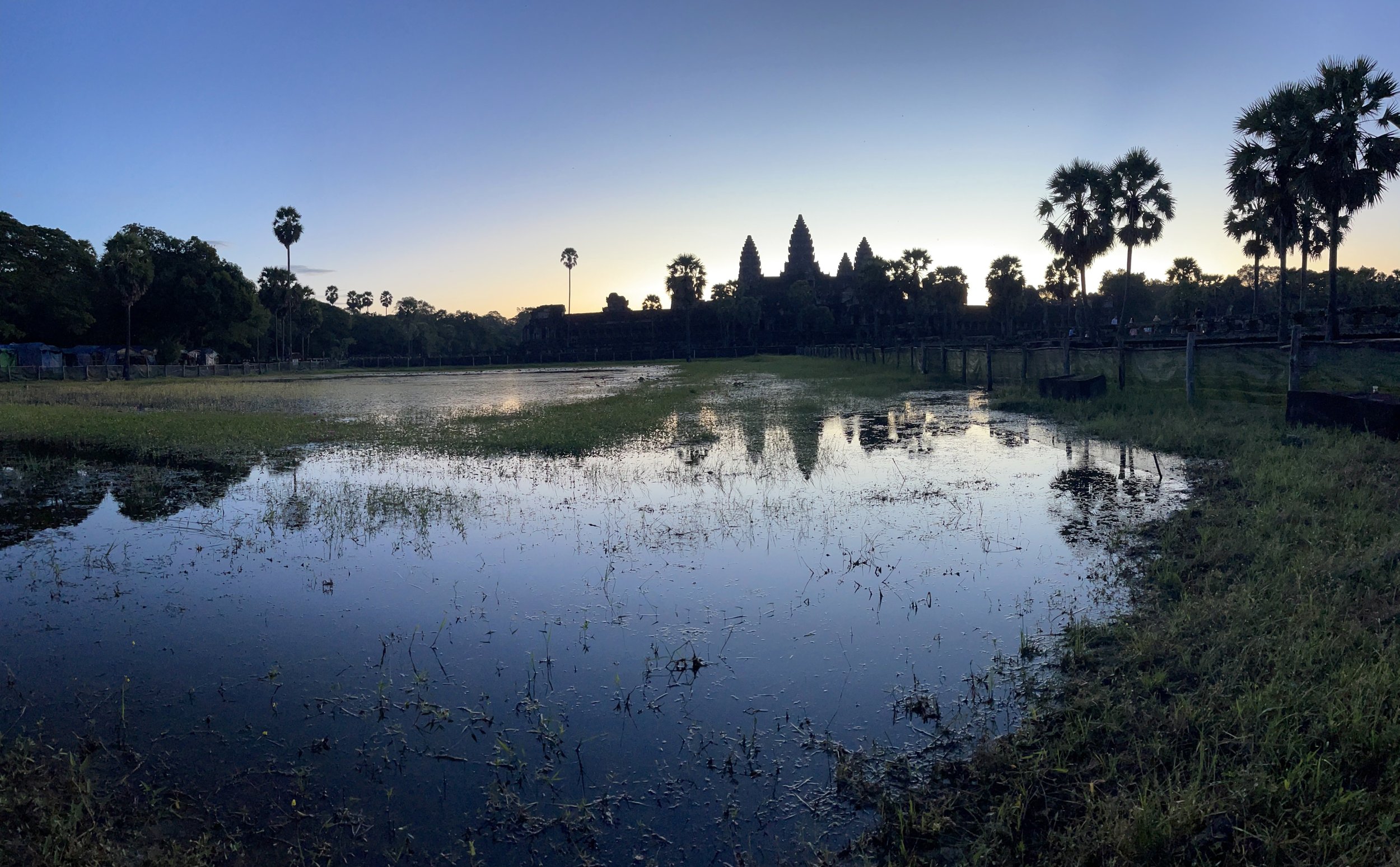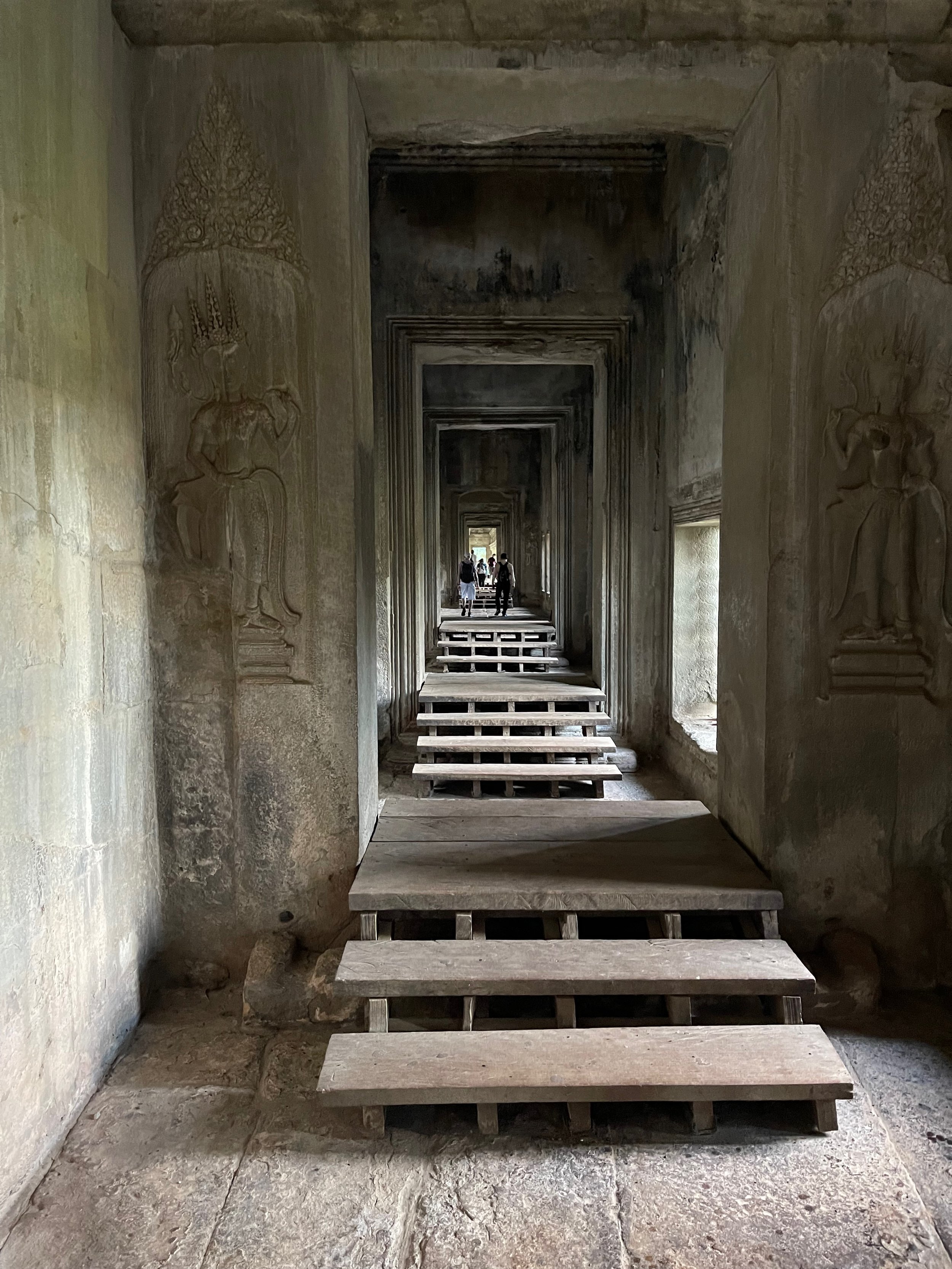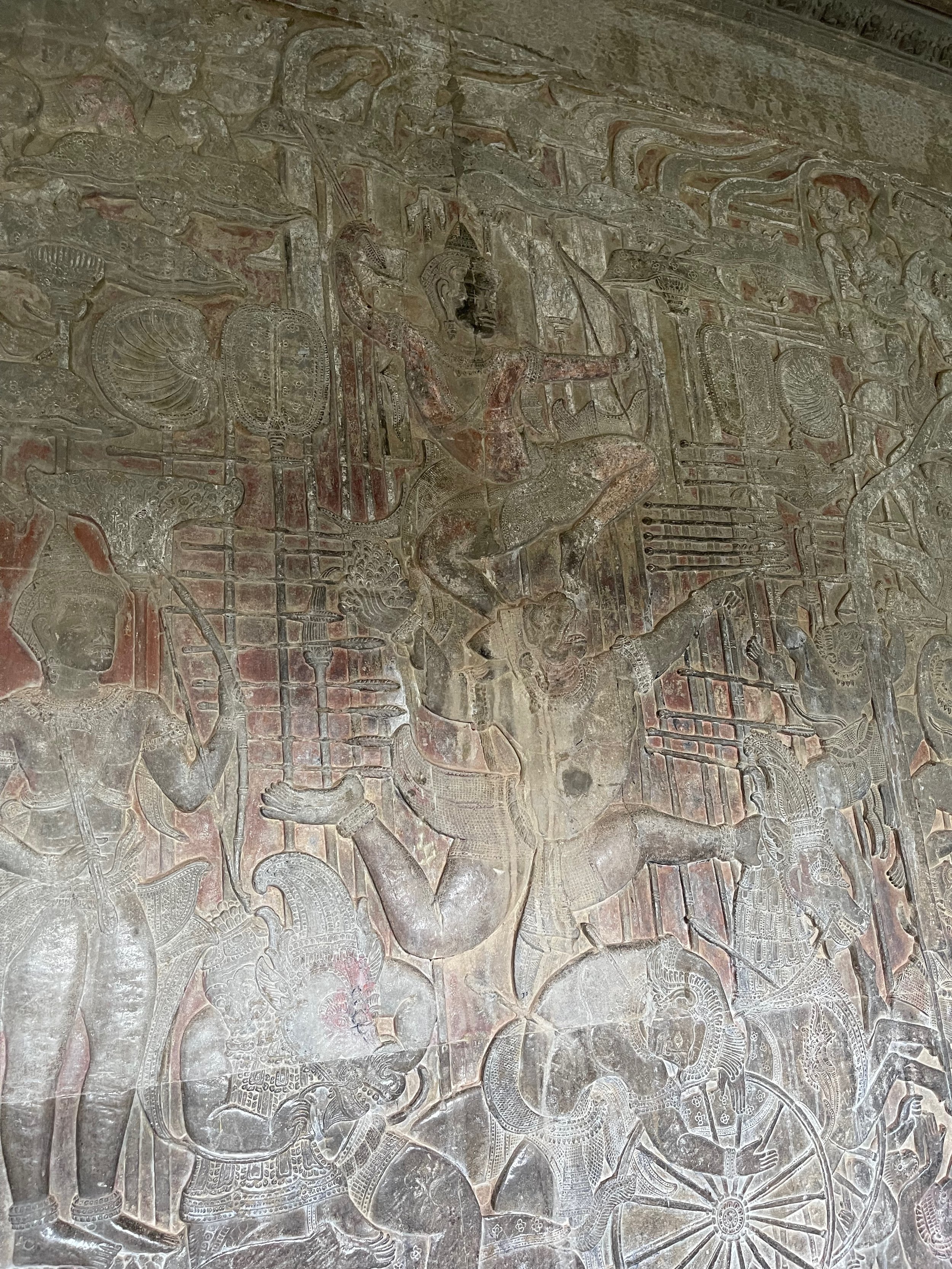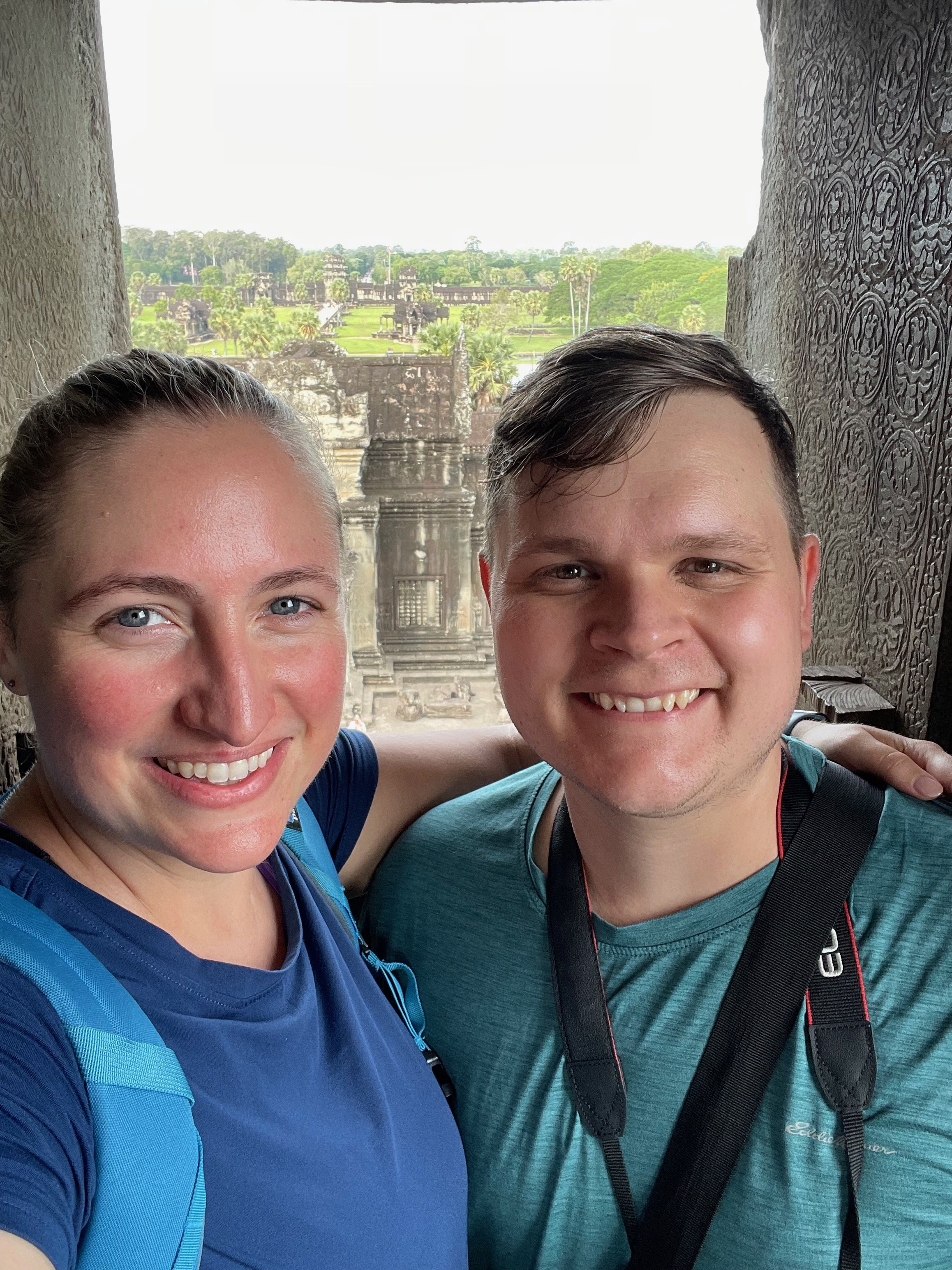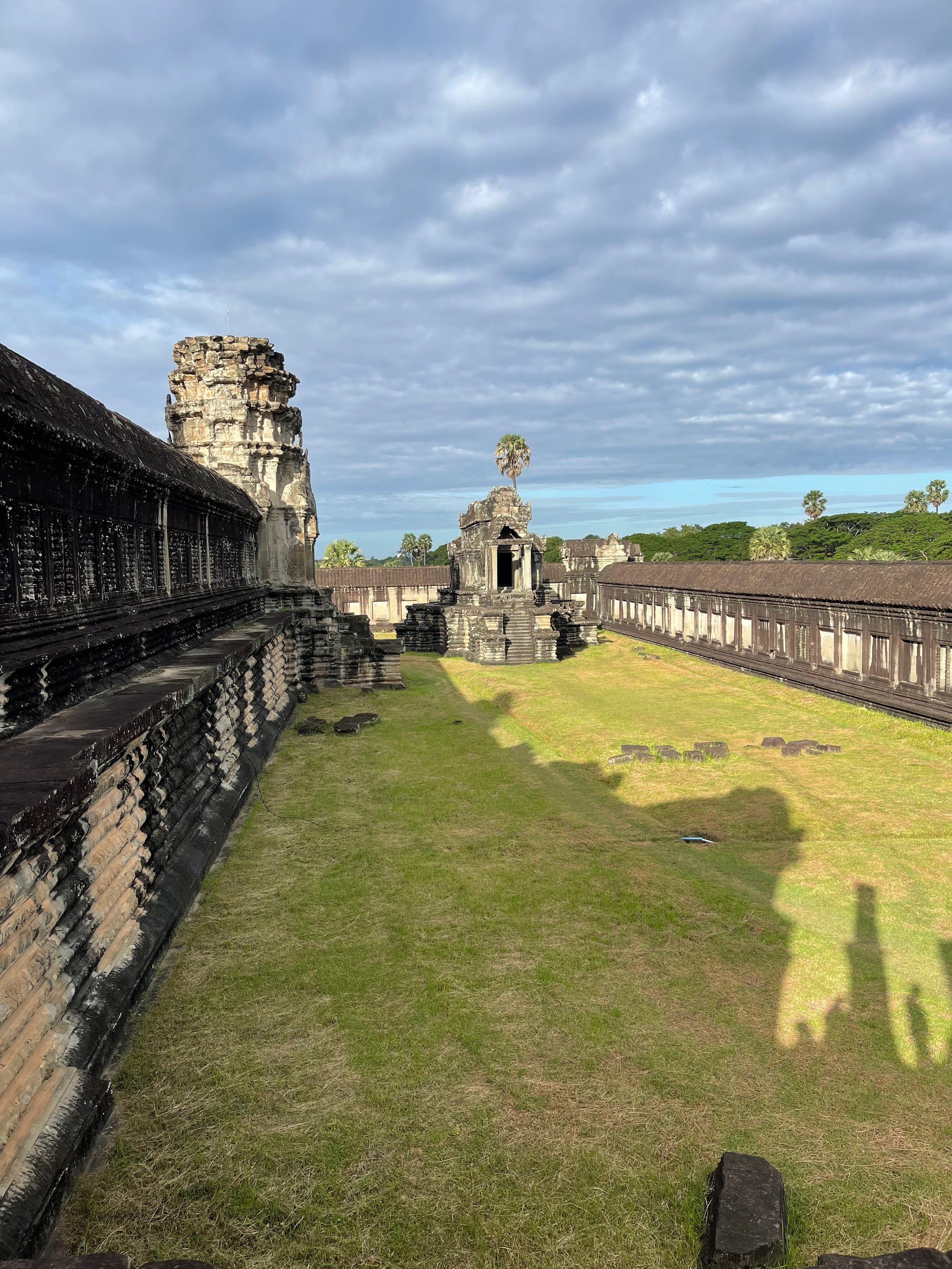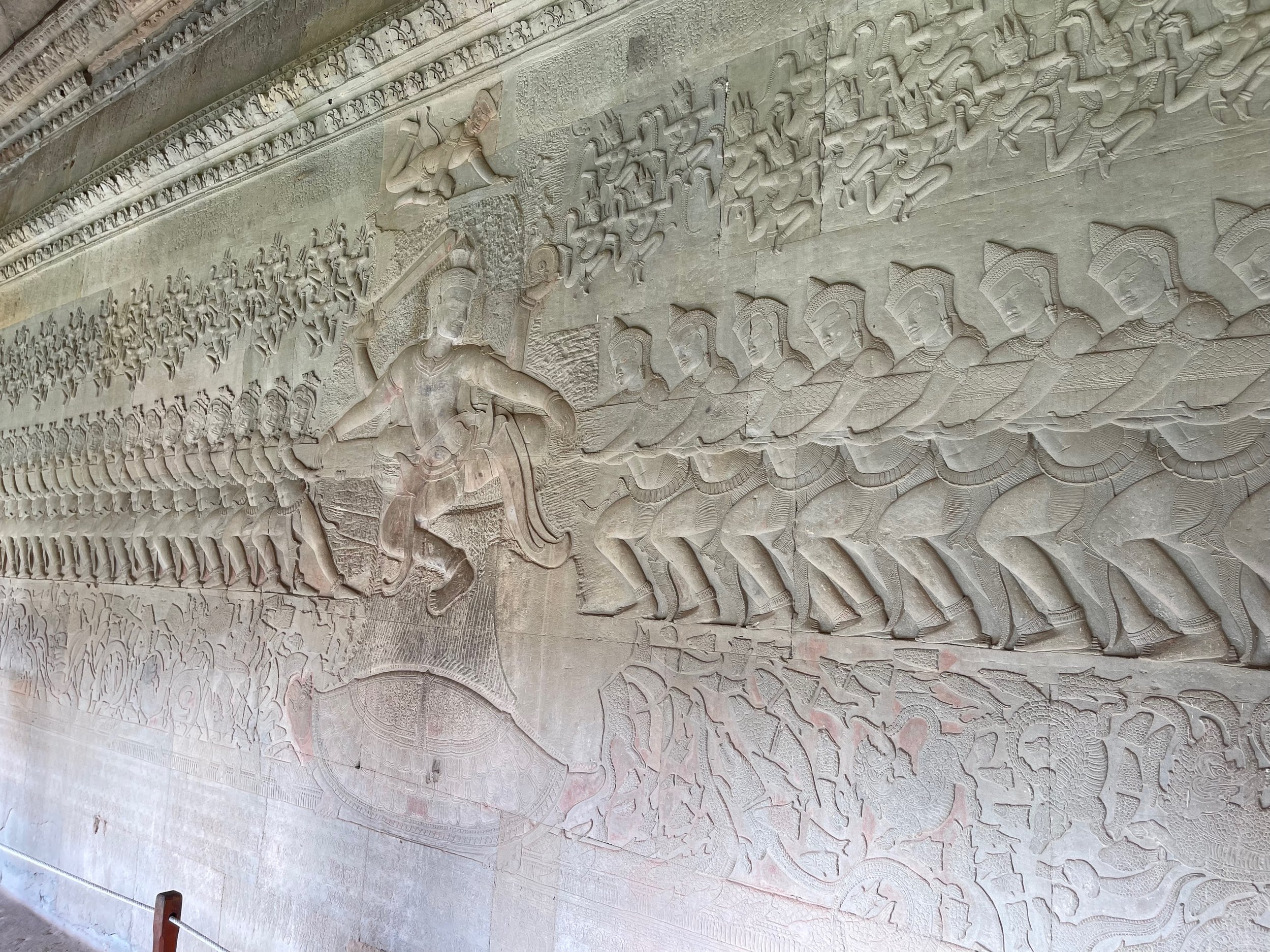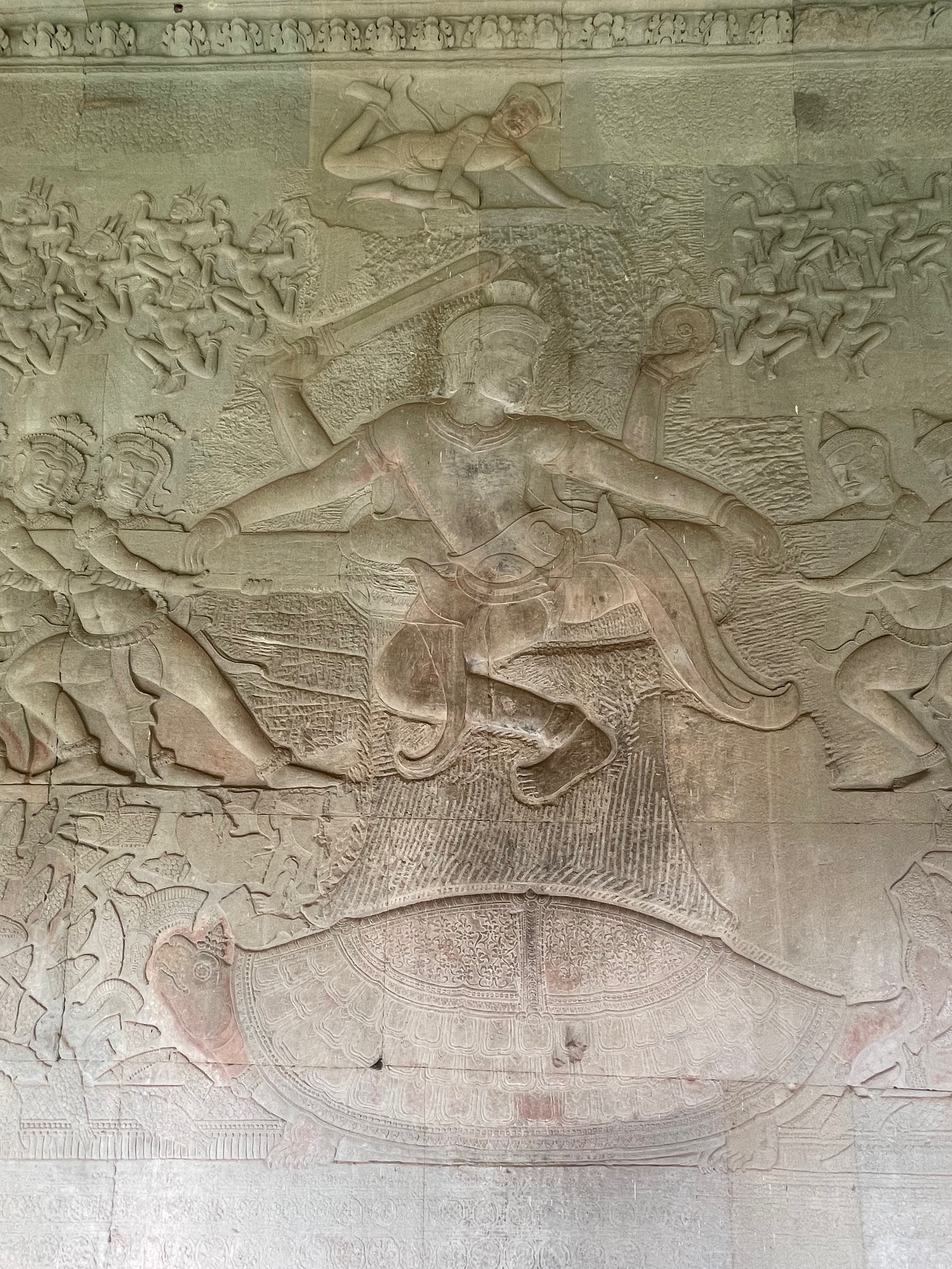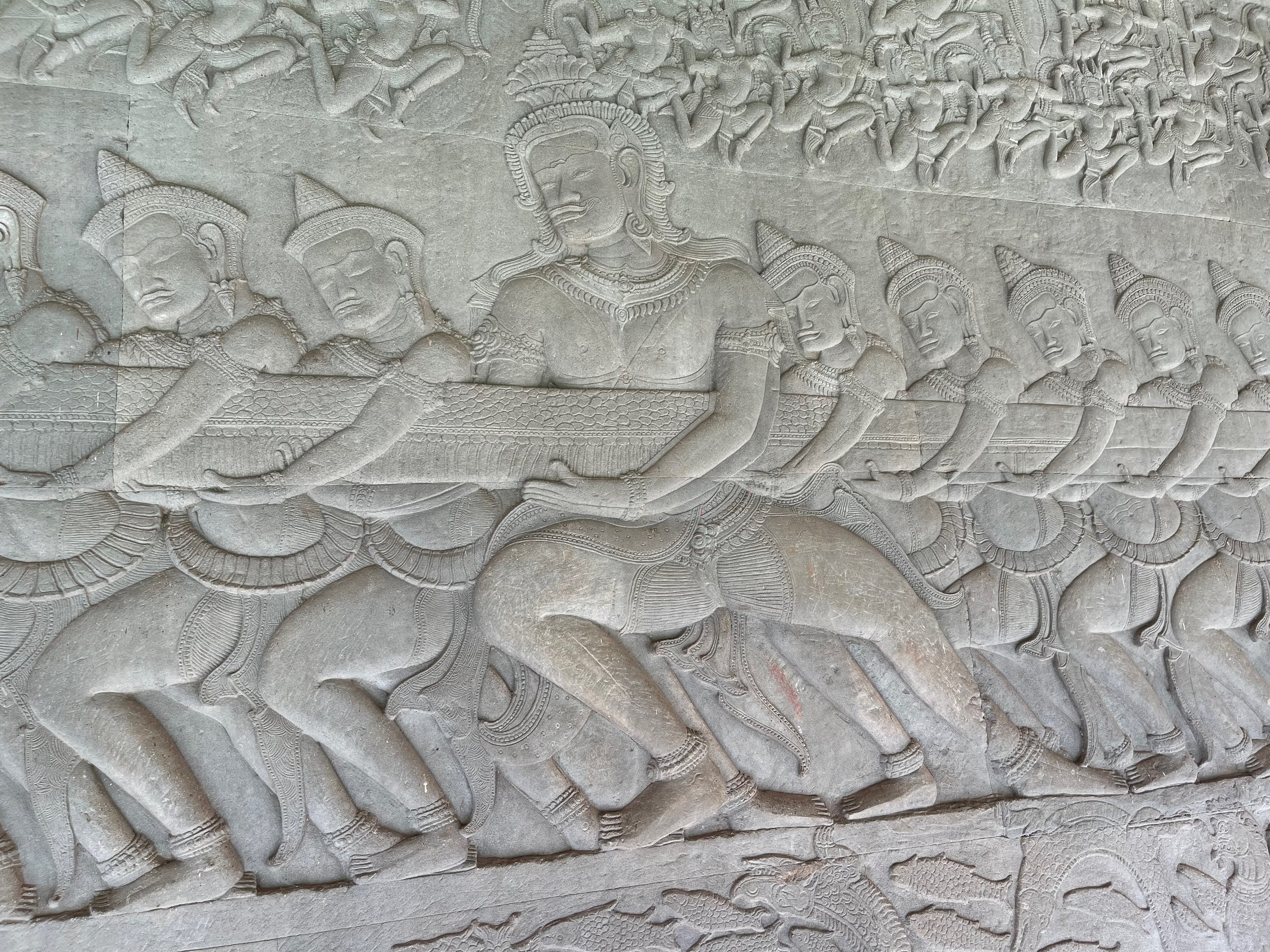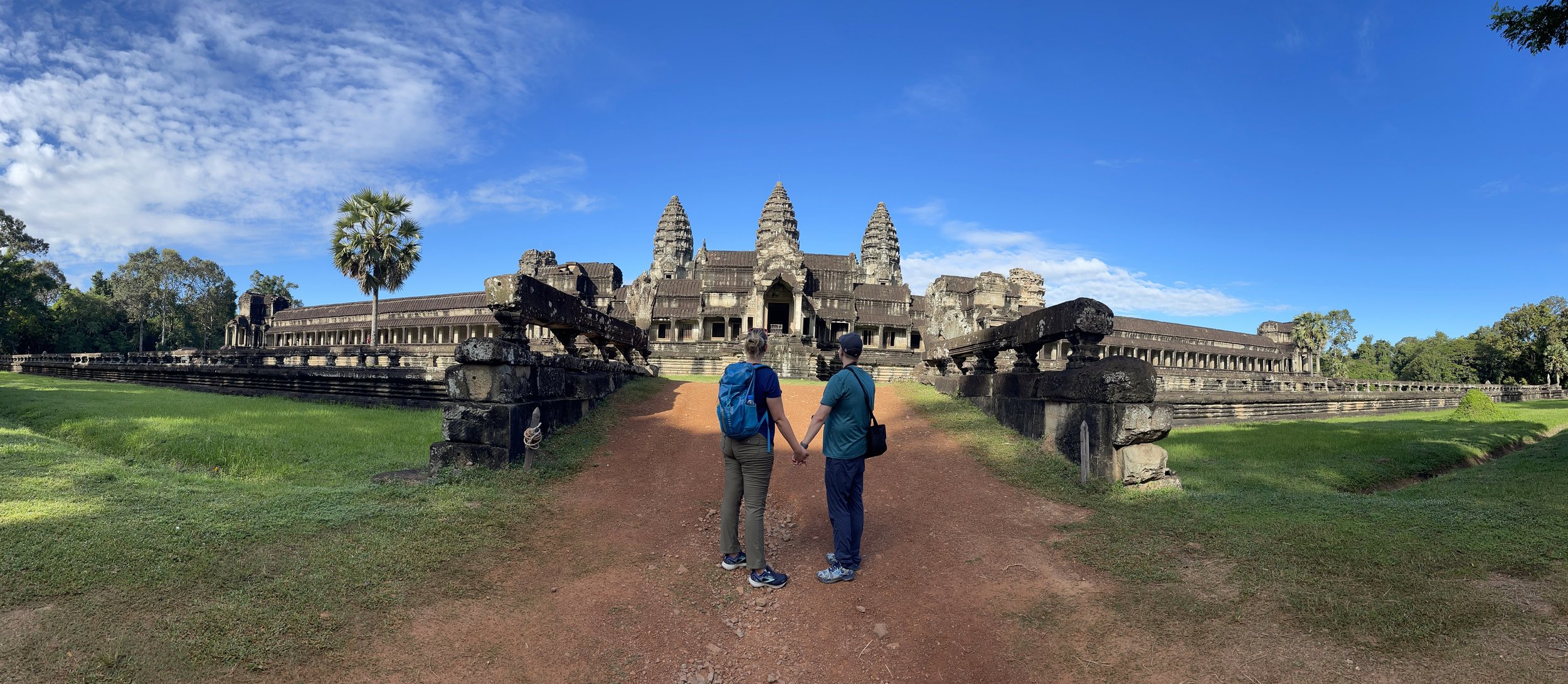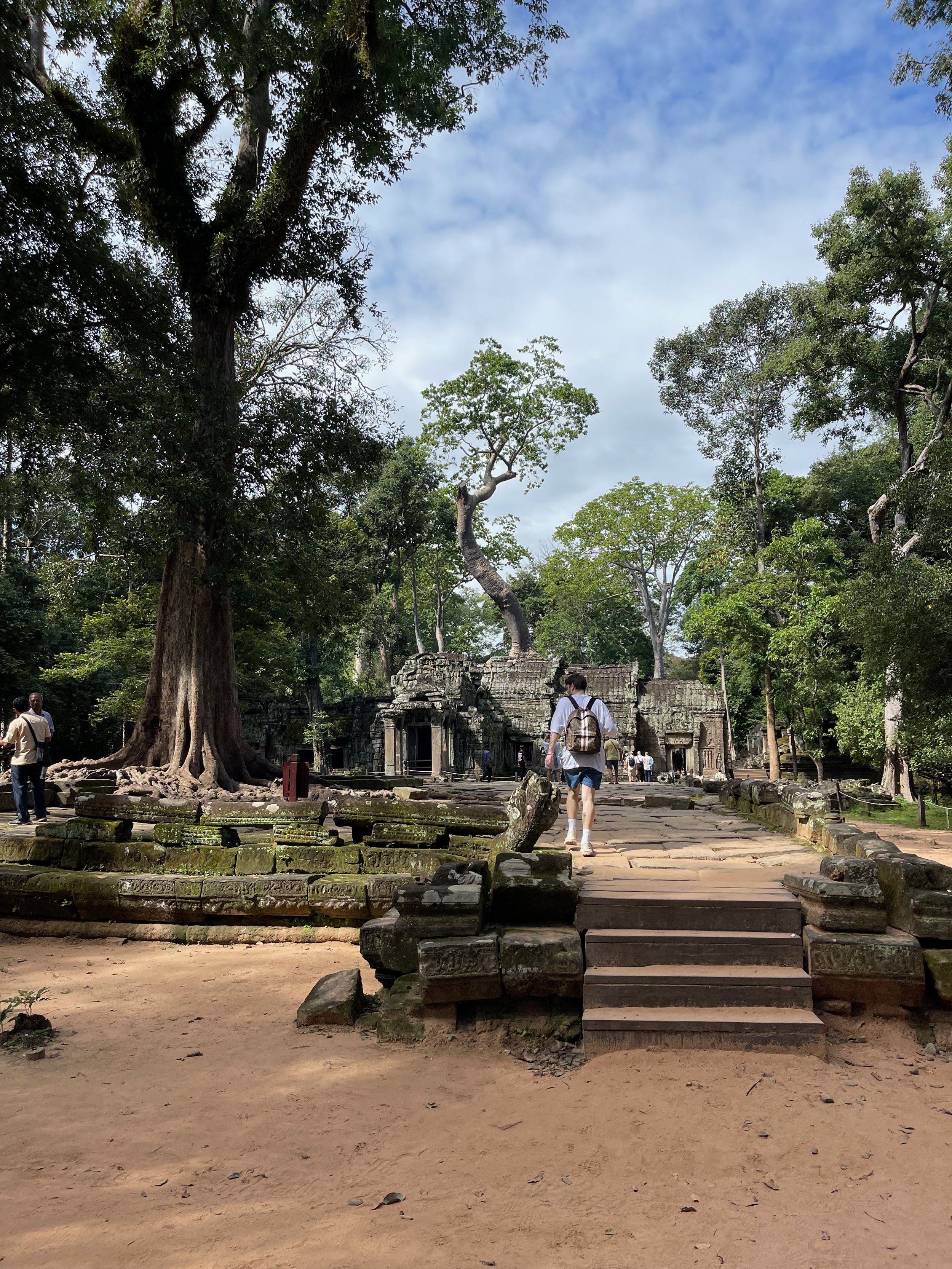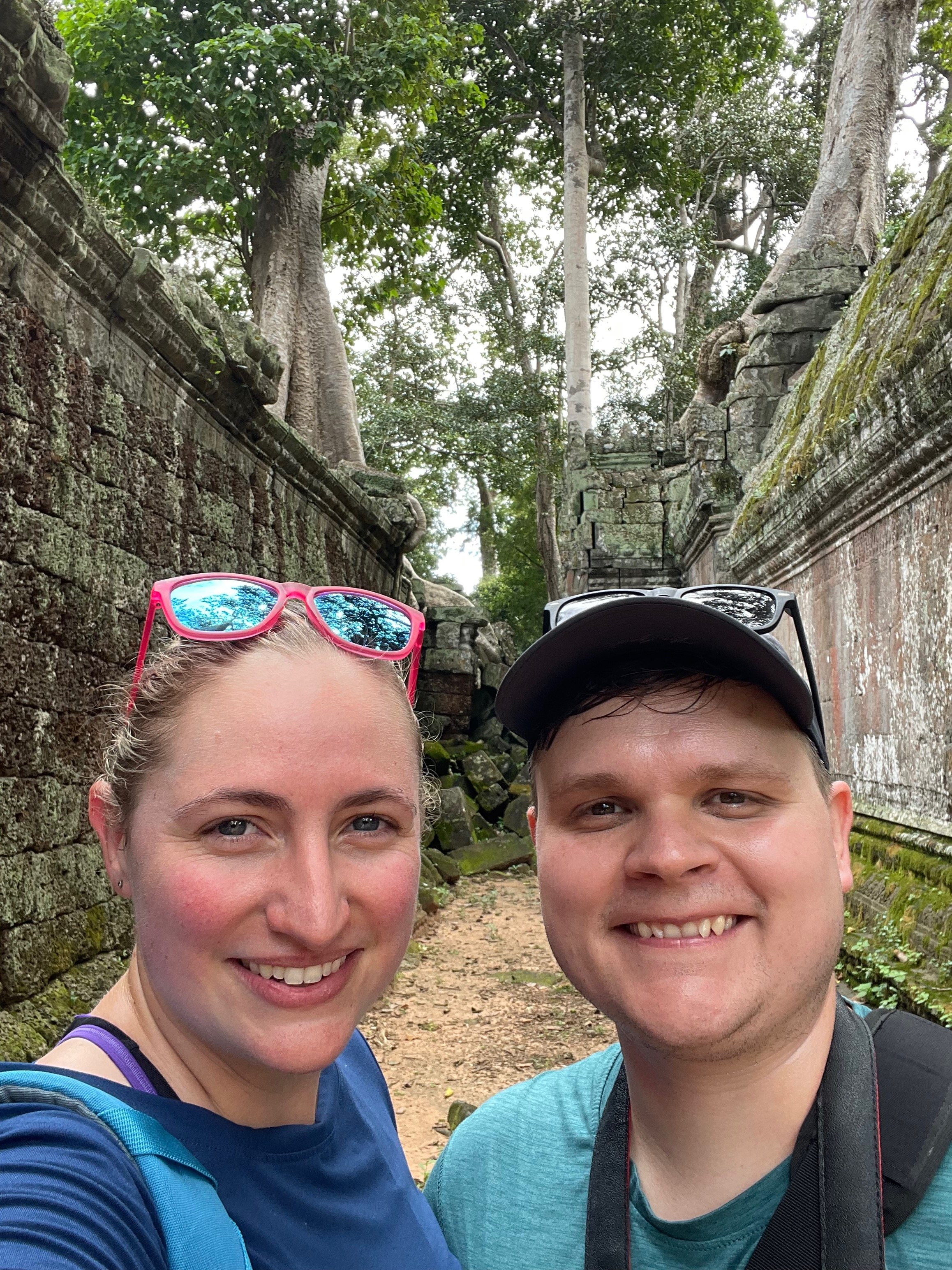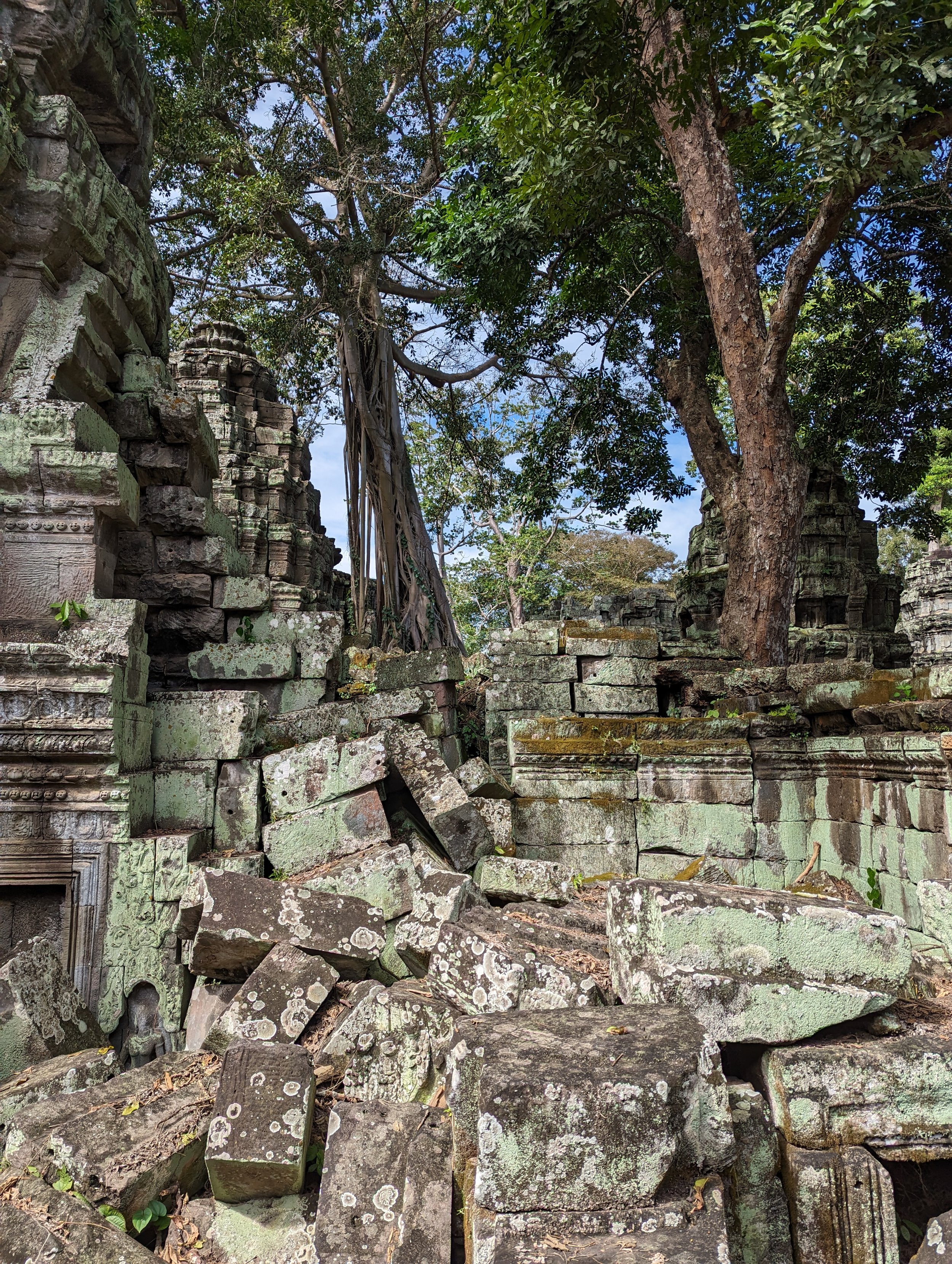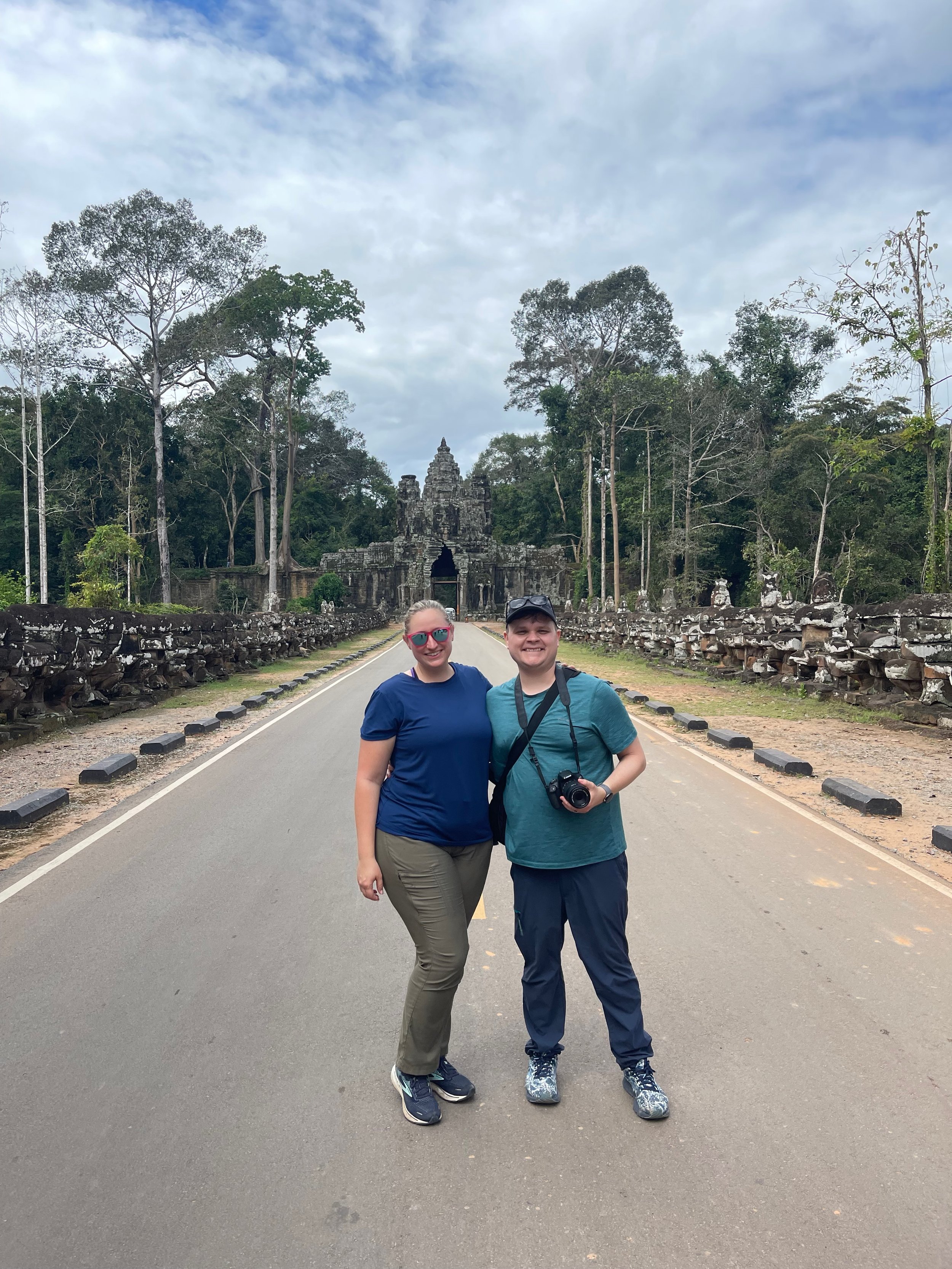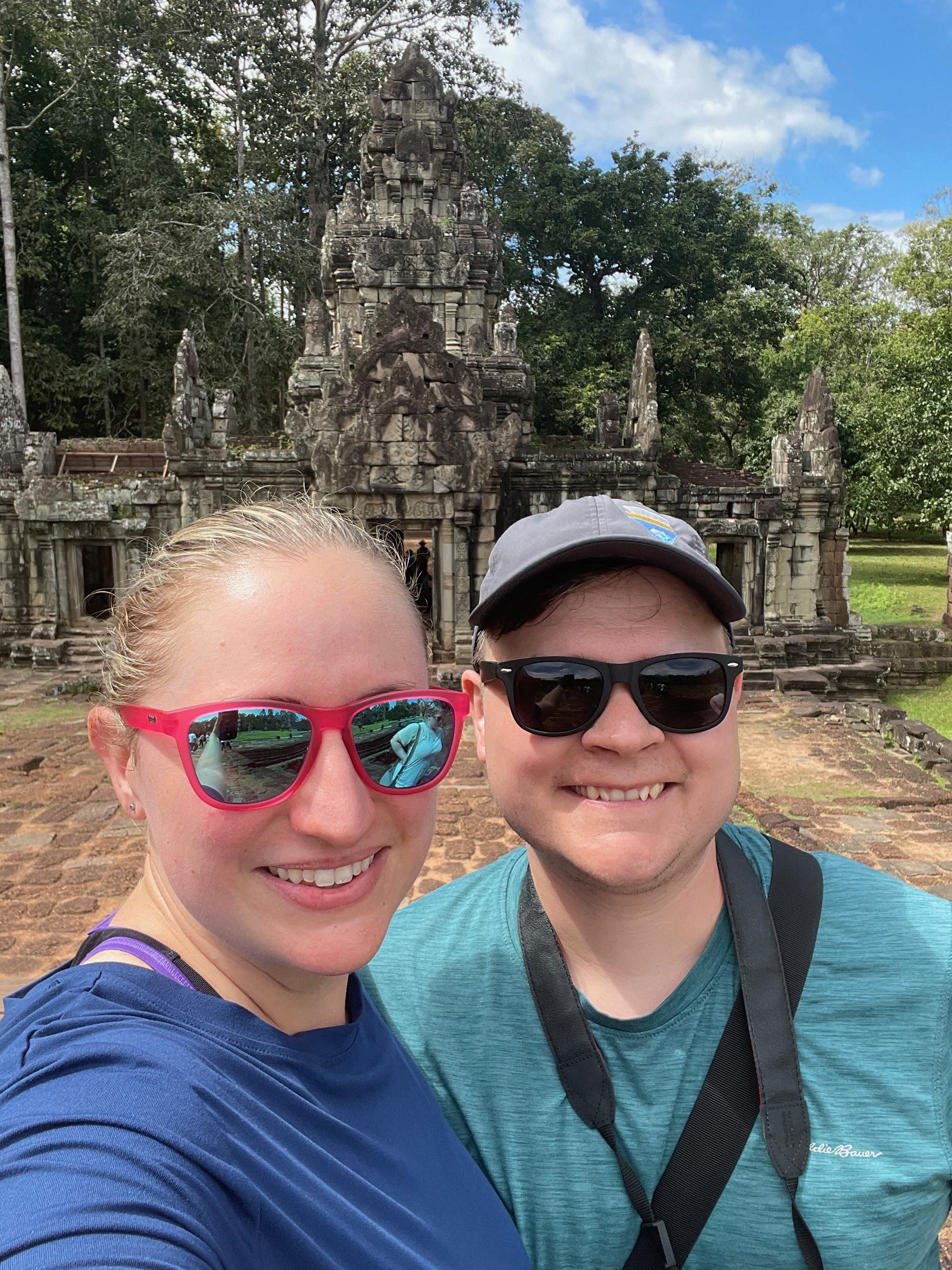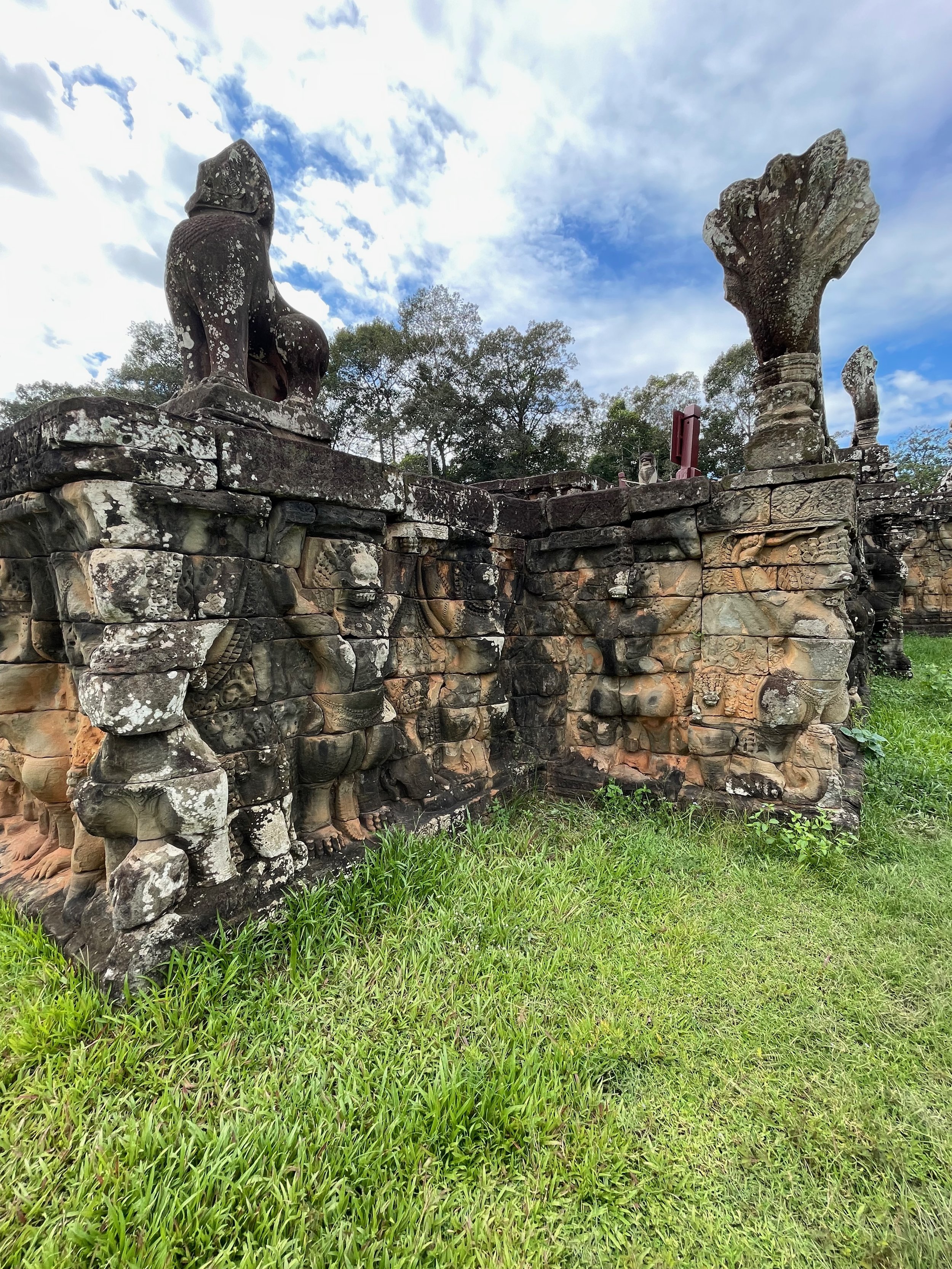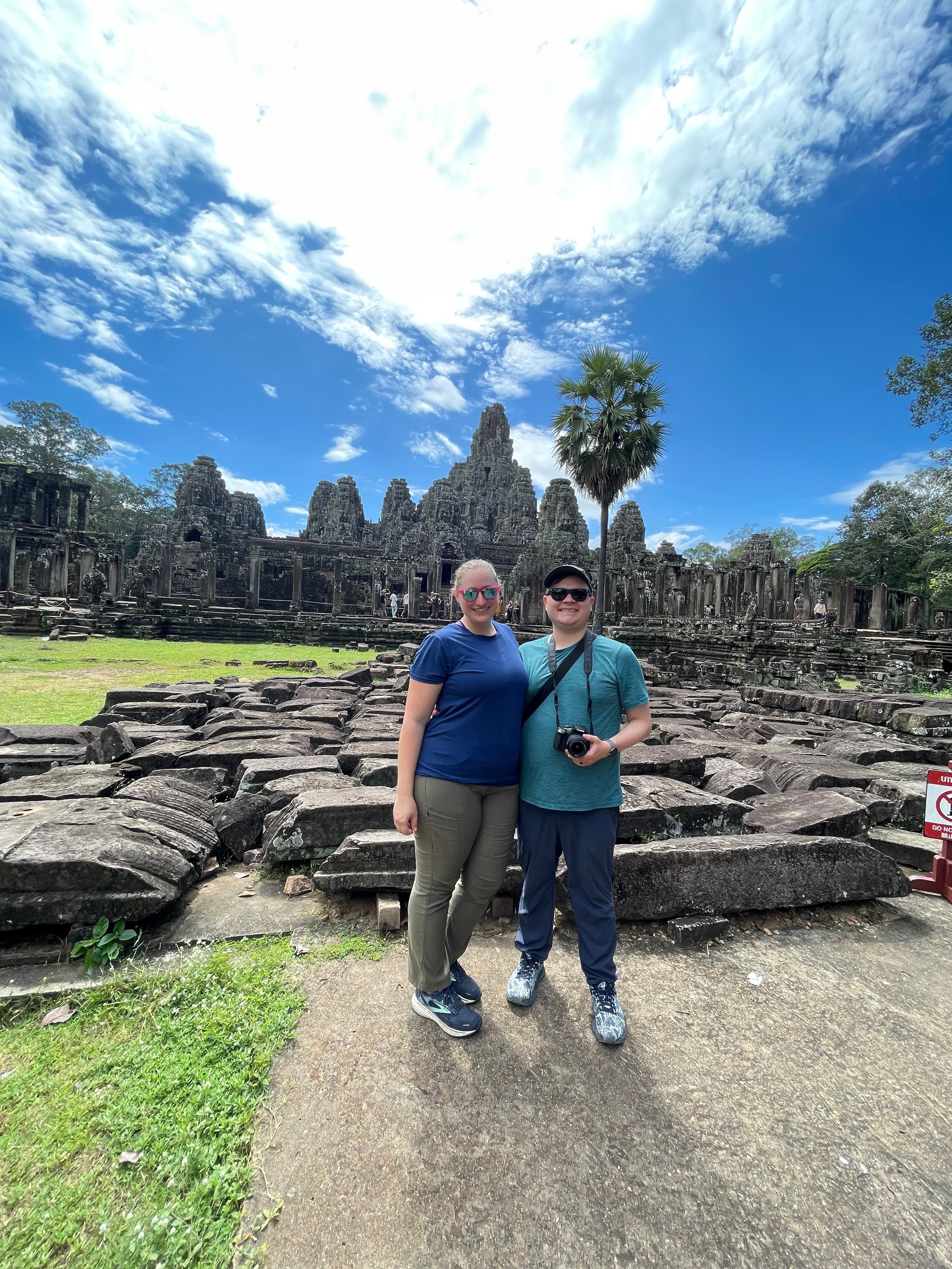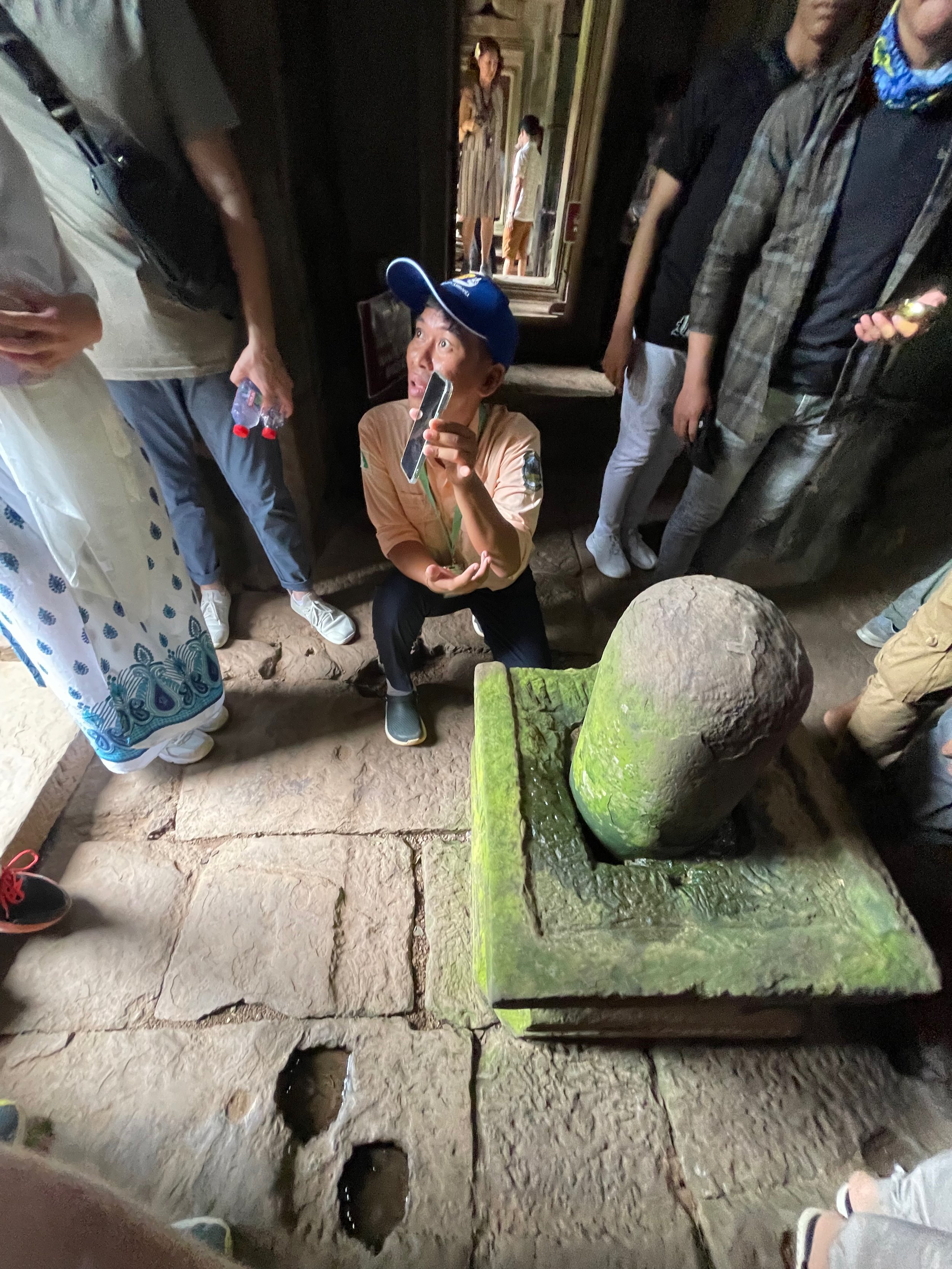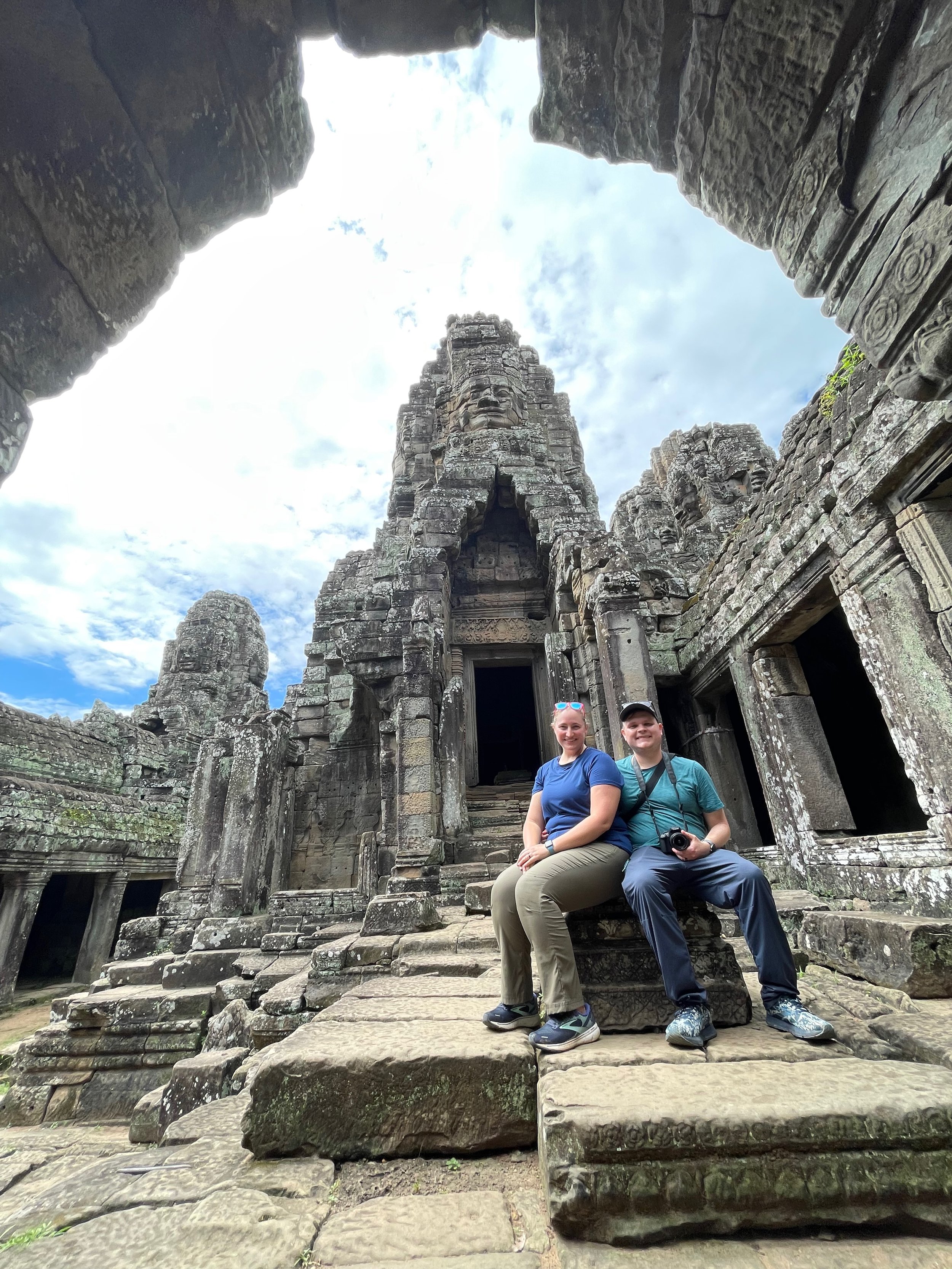Sunrise Tour of Angkor Temples
By Lauren Gerzina & Justin Hayes
Sunrise, Snakes (Naga), and Buddha
The alarm went off at 3:45am. Woof. Why does a sunrise tour require us to get up so early??? By 4:05, we got a call from our tour guide to meet him downstairs. We quickly went outside to meet him and join our very bright yellow mini bus. Of course, we were the first to be picked up. Joy. After picking up 4 other couples, we headed to the Angkor ticket center because apparently many people didn’t get the memo to buy their tickets online the day before. Luckily, this meant we could grab a coffee at the tiny café in the ticket center. They sure know how to make a buck at 4:30am. But we were certainly grateful for the caffeine. Twenty minutes later, we all were loaded back onto the bus headed north to Angkor.
The ancient city of Angkor was only about a 20-minute ride north of Siem Reap. We rode through pitch darkness to a location where the bus let us off to walk the rest of the way (about a half mile) to Angkor Wat. Still pitch black. Our tour guide (Pi) shone a flashlight to lead us down the dark path while remarking that there were too many stars out. What did he mean by this? Apparently nights with some rain and clouds would lead to more beautiful sunrises. Well there goes our dreams of purple and pink skies.
We unceremoniously walked straight through the entrance gates of Angkor Wat, with all of us wishing we could actually see it better. At the start of a long bridge leading to Angkor, our guide stopped us and said the best views are behind the 2 ponds on either side of this bridge (so that we could capture the reflection of the temple). On one side, there was no fence around the water, so tons of tourists flocked there for the uninhibited picture.
But Pi admitted to us that the views are just as beautiful from the opposite pond, but with WAY fewer people. He recommended that we find a spot close to the fence so the fence wouldn’t be in our way. This was the ultimate pro tip. It also worked out really well that the fence was used for stability on Justin’s DSLR camera as he took long exposure shots. While sunrise was officially at 6:05, Pi told us to meet him back on the bridge at 6 since all the best light would be from 5:15-5:45. Again, he was right. The pre-sunrise was beautiful, but as the sun actually came up, it became too harsh and bright to get a good shot.
So, at 6:00am we started our tour of Angkor Wat, a beautiful Hindu temple built by Suryavarman II to honor Vishnu, the god of Preservation. While there is nothing found that officially documented how long it took to build, Pi told us that archaeologists believe it took around 30 years and 300,000 people to build the temple.
Every wall, column, and statue was meticulously carved with beautiful depictions of Hindu gods, dancing ladies (Asparas), etc. Unfortunately, the temple has been ransacked many times throughout history (or even left to be overgrown by the jungle). When King Jayavarman VII ruled the kingdom, he ordered all of the Hindu statues to be destroyed and replaced by Buddha statues.
In the past couple hundred years, art thieves stole tons of the artwork displayed in the temple. This mostly manifested in heads of every imaginable statue being chiseled off and sold on the black market. So many, many, many statues were beheaded throughout the entire trip to Angkor. It was very sad.
We were able to take tons of pictures, and even went to the third level of the temple to take some beautiful photos of the view. During the 1200s, the third level could only be visited by the King and his religious leader (no one else in the royal family could even visit). Before finally departing Angkor Wat to visit other temples, we checked out the ornate story of when Vishnu helped 88 asuras (gods) on the left, and 92 devas (demons), with crested helmets, used a mountain as a pivot and a giant naga (snake) as a rope to churn up the sea to extract from it the elixir of immortality. This story – The Churning of the Ocean of Milk – was incredibly important to the Khmer people and is depicted all over Angkor (almost every bridge depicted this story as well).
We walked back to the bus and were whisked off to a local breakfast shop (within the Angkor grounds) to “visit the coffee temple” as Pi liked to tell us. At breakfast, we spoke to some of our bus mates, including an American entrepreneur and his girlfriend, who we learned was from Poland. The American was CEO of a company called Pavlock, which created a bracelet that gave varying degrees of electric shocks to modify behavior. He told that he was infamously on Shark Tank and that Mark Cuban and he got into a tussle (we watched the video and can confirm).
After breakfast, we hopped back on the bus and headed to our next stop, the Ta Promh temple, made famous by its appearance in Laura Croft: Tomb Raider (it’s the temple that has the trees growing through it). This Buddhist temple was built in the city of Angkor Tom by King Jayavarman VII in honor of his mom. Our tour guide knew every single Instagram-worthy photo you could take in this temple and offered to take them for us.
Our next stop in Angkor Tom was the remains of a wall – the Terrace of the Elephant – that used to surround a part of the city where all of the buildings were made of wood. The wood structures did not survive, but the wall, ordained with elephants and garuda (the bird god) statues, remained. We talked to a couple from Melbourne, Australia who were also on their honeymoon, doing a three-month trip.
Our final stop of the day was to the Bayon temple, another Buddhist temple in Angkor Tom built in honor of King Jayavarman VII. Jayavarman VII was the most popular and infamous king of the Khmer Empire, not for building all of these amazing temples, but for building hospitals, schools, and other institutions to support his people. The temple itself is famous for its depictions of Buddha’s face on all four sides of each tower. Later, when a Hindu king came to power in Angkor Tom, they kept the images of Buddha on the temples by simply saying that they depicted the four-faced god Brahma. However, under Hindu rulers, some of the interior Buddhas were replaced by lingas, or phallic statues that symbolize an aspect of Shiva’s generative power.
After leaving the temple, Pi took us over to a tree where he said we could get another Instagram-worthy photo of the temple and its reflection. We then got back on the bus to head back to our hotels in Siem Reap.
We were starving when we went back to our hotel, so we headed to a Greek place for lunch. We shared a mix dip platter with fries instead of pita bread so Justin could eat them. The dips included Tzaziki, hummus, eggplant, Greek olive, and a few others. Justin ordered roasted eggplant dish and Lauren got chicken souvlaki. The restaurant was run by a Greek guy, who we saw training some of his staff, so it was pretty good.
We headed back to the hotel to relax, nap, shower and take a dip in the pool. Around 7pm or so, we weren’t starving, so we decided to go to Siem Reap’s Pub Street for a pre-dinner drink. We grabbed a couple of ciders and juices at a bar called the Paper Tiger eatery. Pub Street seems like a great place for cheap beer and meal, but most of the cocktails at the bar weren’t that exciting.
We decided to try Chanrey Tree again for dinner, but were redirected to the Sokkhak River Restaurant. It was then that we realized that the Sokkhak River Lounge, Sokkhak River Restaurant, and Chanrey Tree were all basically the same place with the same menu. So Justin decided to try the Khmer dish Fish Amok (a curry dish with Khmer spices and catfish) and Lauren got a Green Vegetable Curry. Both were again very good.
After dinner, we walked through some night markets to look at Angkor Wat paintings. We didn’t see anything that we loved or that didn’t have dirt or markings on the canvas, but we got a good sense of the prices for paintings and hoped to find something better tomorrow.
After a long day, we walked back to the hotel, grabbed some waters, and passed out again.
Below, the galleries are divided by the main temples we visited: Angkor Wat, Ta Prohm, Angkor Tom and Bayon.
























